- Clone
- BV13 (See other available formats)
- Regulatory Status
- RUO
- Other Names
- Vascular endothelial-cadherin
- Isotype
- Rat IgG1, κ
- Ave. Rating
- Submit a Review
- Product Citations
- publications
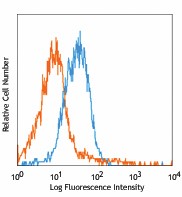
-

Mouse endothelial cells b.End.3 stained with BV13 Alexa Fluor® 647
| Cat # | Size | Price | Quantity Check Availability | Save | ||
|---|---|---|---|---|---|---|
| 138005 | 25 µg | 141€ | ||||
| 138006 | 100 µg | 329€ | ||||
CD144, also known as vascular endothelial-cadherin (VE-cadherin), is a 120 kD member of the type II Cadherin family. It is an endothelial specific hemophilic adhesion molecule involved in endothelial cell survival, migration, contact-dependent growth inhibition, and homophilic adhesion. VE-cadherin is essential for maintaining the integrity of the endothelial barrier in vivo.
Product DetailsProduct Details
- Verified Reactivity
- Mouse
- Antibody Type
- Monoclonal
- Host Species
- Rat
- Immunogen
- VE-cadherin-Ig fusion protein
- Formulation
- Phosphate-buffered solution, pH 7.2, containing 0.09% sodium azide.
- Preparation
- The antibody was purified by affinity chromatography and conjugated with Alexa Fluor® 647 under optimal conditions.
- Concentration
- 0.5 mg/ml
- Storage & Handling
- The antibody solution should be stored undiluted between 2°C and 8°C, and protected from prolonged exposure to light. Do not freeze.
- Application
-
FC - Quality tested
- Recommended Usage
-
Each lot of this antibody is quality control tested by immunofluorescent staining with flow cytometric analysis. For flow cytometric staining, the suggested use of this reagent is ≤1.0 µg per million cells in 100 µl volume. It is recommended that the reagent be titrated for optimal performance for each application.
It is also recommended using EDTA-based solutions for dissociating attachment-dependent cell lines.
* Alexa Fluor® 647 has a maximum emission of 668 nm when it is excited at 633 nm / 635 nm.
Alexa Fluor® and Pacific Blue™ are trademarks of Life Technologies Corporation.
View full statement regarding label licenses - Excitation Laser
-
Red Laser (633 nm)
- Application Notes
-
Clone BV13 recognizes an epitope between aa 45 and 56, and has a binding affinity of 5-15 nM5. Additional reported applications (for relevant formats) include: Western blotting1, blocking of cell interactions in vivo1, and immunofluorescence microscopy staining4.
-
Application References
(PubMed link indicates BioLegend citation) -
- Corada M, et al. 1999. P. Natl. Acad. Sci. USA 96:9815. (WB, Block)
- Liao F, et al. 2000. Cancer Res. 60:6805. (FC)
- Crosby CV, et al. 2005. Blood 105:2771. (FC)
- Liao F, et al. 2002. Cancer Res. 62:2567. (IF)
- May C, et al. 2005. Blood 105:4337. (epitope)
- Product Citations
-
- RRID
-
AB_10568319 (BioLegend Cat. No. 138005)
AB_10568319 (BioLegend Cat. No. 138006)
Antigen Details
- Structure
- A 120 kD member of type II Cadherin family
- Distribution
-
Endothelial cells
- Function
- Involved in endothelial cell survival, migration, contact-dependent growth inhibition, and hemophilic adhesion
- Ligand/Receptor
- CD144
- Cell Type
- Endothelial cells, Mesenchymal Stem Cells
- Biology Area
- Cell Biology, Immunology, Innate Immunity, Neuroscience, Stem Cells, Synaptic Biology
- Molecular Family
- Adhesion Molecules, CD Molecules
- Antigen References
-
1. Allport JR, et al. 2002. J. Leukocyte Biol. 71:821.
2. Hirashima M, et al. 2009. Blood 93:1253.
3. Matsuyoshi N, et al. 1997. Proc. Assoc. Am. Physicians 109:362.
4. Matsumura K, et al. 2003. Blood 101:1367.
5. Hirashima M, et al. 2009. Blood 101:2261.
6. Gotsch U, et al. 1997. J. Cell Sci. 110:583.
7. Kataoka H, et al. 1997. Dev. Growth Differ. 39:729. - Gene ID
- 12562 View all products for this Gene ID
- UniProt
- View information about CD144 on UniProt.org
Related Pages & Pathways
Pages
Related FAQs
Other Formats
View All CD144 Reagents Request Custom Conjugation| Description | Clone | Applications |
|---|---|---|
| Purified anti-mouse CD144 (VE-cadherin) | BV13 | FC,WB,ICC,Block |
| Alexa Fluor® 647 anti-mouse CD144 (VE-cadherin) | BV13 | FC |
| Biotin anti-mouse CD144 (VE-cadherin) | BV13 | FC |
| PE anti-mouse CD144 (VE-cadherin) | BV13 | FC |
| APC anti-mouse CD144 (VE-cadherin) | BV13 | FC |
| Brilliant Violet 421™ anti-mouse CD144 (VE-cadherin) | BV13 | FC |
| PE/Cyanine7 anti-mouse CD144 (VE-cadherin) | BV13 | FC |
| TotalSeq™-A1036 anti-mouse CD144 (VE-cadherin) | BV13 | PG |
| Ultra-LEAF™ Purified anti-mouse CD144 (VE-cadherin) Antibody | BV13 | FC,WB,ICC,Block |
Customers Also Purchased
Compare Data Across All Formats
This data display is provided for general comparisons between formats.
Your actual data may vary due to variations in samples, target cells, instruments and their settings, staining conditions, and other factors.
If you need assistance with selecting the best format contact our expert technical support team.
-
Purified anti-mouse CD144 (VE-cadherin)
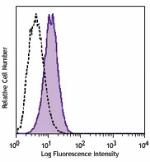
Mouse endothelial cells bEnd.3 was stained with purified CD1... -
Alexa Fluor® 647 anti-mouse CD144 (VE-cadherin)
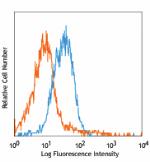
Mouse endothelial cells b.End.3 stained with BV13 Alexa Fluo... -
Biotin anti-mouse CD144 (VE-cadherin)
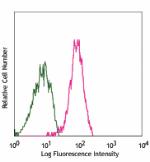
Mouse endothelial cells bEnd.3 stained with biotinylated ant... -
PE anti-mouse CD144 (VE-cadherin)
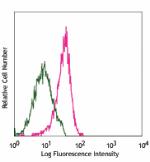
Mouse endothelial cells bEnd.3 stained with PE anti-mouse CD... -
APC anti-mouse CD144 (VE-cadherin)
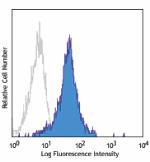
bEnd.3 cells surface stained with CD144 (clone BV13) APC (f... -
Brilliant Violet 421™ anti-mouse CD144 (VE-cadherin)
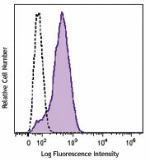
Mouse endothelial cells bEnd.3 were stained with CD144 (clon... -
PE/Cyanine7 anti-mouse CD144 (VE-cadherin)
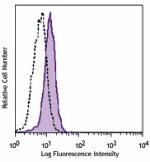
Mouse endothelial cells bEnd.3 were stained with CD144 (clon... -
TotalSeq™-A1036 anti-mouse CD144 (VE-cadherin)
-
Ultra-LEAF™ Purified anti-mouse CD144 (VE-cadherin) Antibody

 Login / Register
Login / Register 










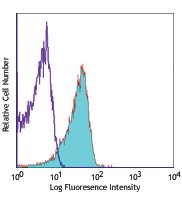
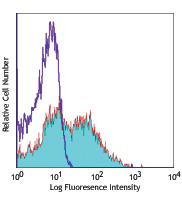

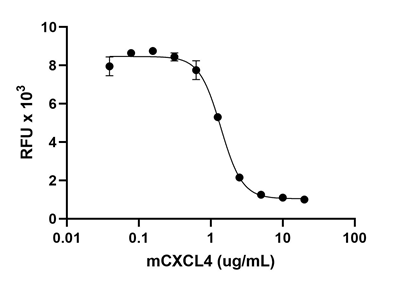



Follow Us